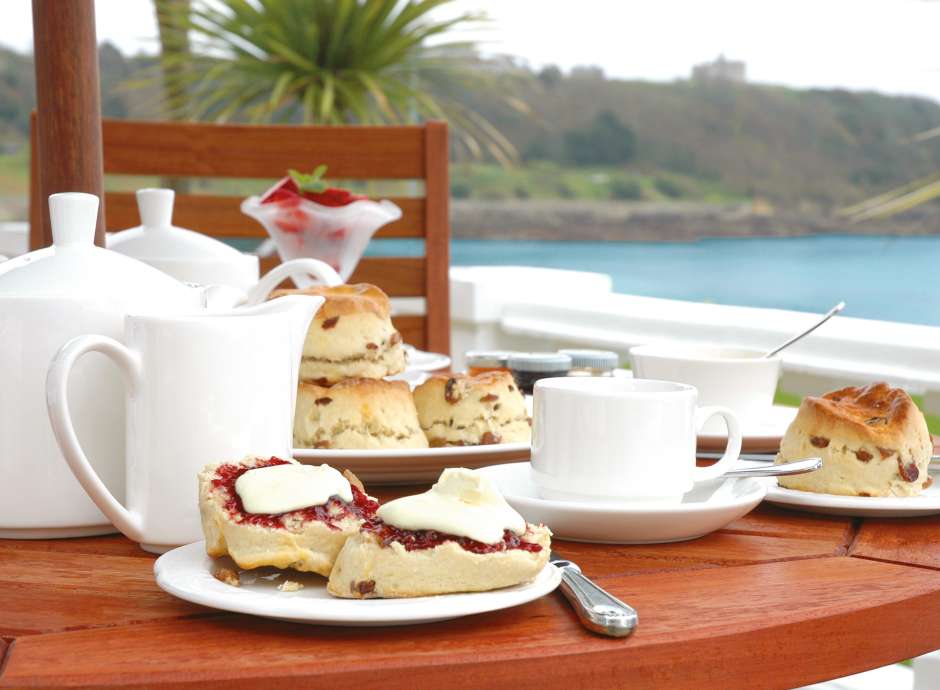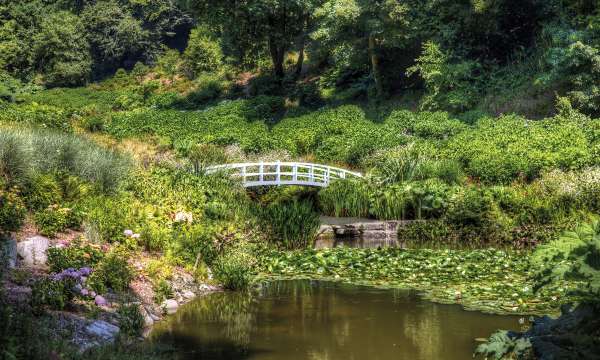Cream or Jam first?
There's something about the indulgent combination of scones, jam and a dollop of clotted cream that begs the question - what is the history of the Cornish cream tea?
Whilst the custom of drinking tea dates back to the third millennium BC in China and was popularised in England during the 1660s by King Charles II and his wife, it wasn’t until the mid 17th century that the concept of ‘afternoon tea’ first appeared.
The story goes that in around 1840, the seventh Duchess of Bedford became peckish in the afternoon waiting for dinner time. At the time people only usually ate two main meals per day; breakfast and dinner late in the evening. The solution for the Duchess was a pot of tea and a light snack, taken privately in her boudoir during the afternoon. Fed up with having nothing to do whilst the men were off hunting and drinking, she began inviting friends to her boudoir for afternoon tea. Her habit became a fashionable social event; upper class and society women donned their long gowns, gloves and hats for afternoon tea in the drawing-room between four and five o’clock.
The idea didn’t go unnoticed by other social hostesses and before long all of fashionable society was sipping tea and nibbling sandwiches in the middle of the afternoon.
Traditional afternoon tea consists of a spread of dainty sandwiches, cakes, scones, cream and preserves with tea poured from silver teapots into delicate bone china cups; the first hint of cream teas as we know them today.

The Cream Tea
So onto the cream tea itself and the centuries-old Devonshire vs Cornish debate over the origin of this finest of English dining traditions.
Local historians in Tavistock, West Devon, claim that ancient 11 Century manuscripts depict that the monks of the local Benedictine Abbey fed local workers with bread, clotted cream and preserves who were restoring the Abbey after it was plundered by Vikings in 997AD. However, take a step over the border and the Cornish make a mighty claim for originating clotted cream in 500BC. Food historian, Alan Davidson, theorised that Phoenicians (from what is now modern-day Lebanon and Syria) sailed to the Cornish shores and traded their art of cream making called ‘Kaymak’ (a recipe similar to clotted cream that is still produced in Lebanon and Afghanistan today) for Cornish tin. No matter its heritage, the Cornish have undeniably made it their own.

'The proper way'
Cream first or jam first? It is a debate that has been rumbling on for years between the Devonians and the Cornish.
Traditional afternoon tea consists of a spread of dainty sandwiches (of course including thinly sliced cucumber sandwiches) cakes, scones, cream and preserves with tea poured from silver teapots into delicate bone china cups; the first hint of cream teas as we know them today.
The Cornish Cream Tea method is the cream on jam approach and is much more in keeping with traditional ideas of frugality and saving costly ingredients - the idea being that if you place clotted cream on top, you can use less jam. This is very much open to interpretation and is perfect for recreating that classic Cornish taste.
Whereas the go-to option for most people (including the Queen), is the Devon option which follows the standard jam on cream approach. Considered the most aesthetically pleasing of the two, the jam flavour is slightly more emphasised with this approach.
We like to think of it as a unity of two of England’s finest counties and however you enjoy this most patriotic of pleasures, we won’t judge you (as long as the cream is clotted!



